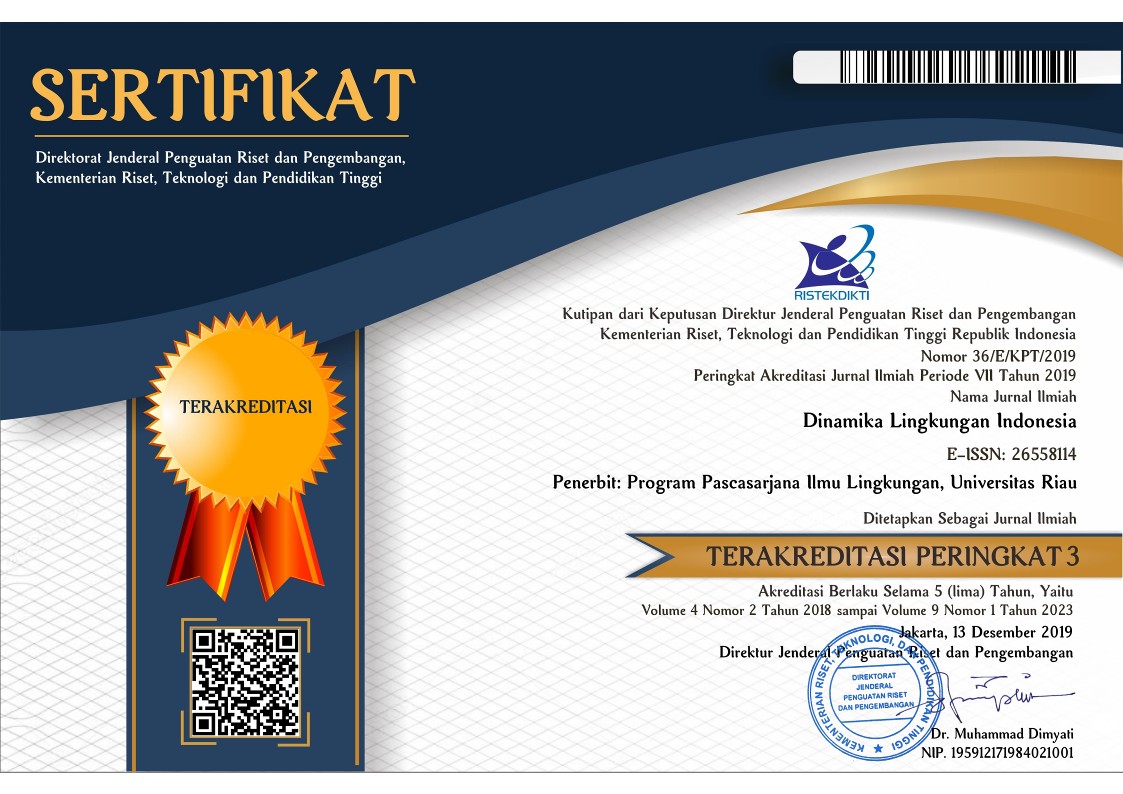Arsitektur hijau mendukung adaptasi perilaku di masa pandemi Coronavirus disease (COVID-19) di Alun-Alun Kota Batam
Abstract
This study aims to determine the principles of a green architecture approach that can support behavior change during the Covid-19 pandemic and to determine the arrangement of green architecture that can support behavior change during the Covid-19 pandemic in Batam City Square. This research method is to use literature study. The results show that in the Covid-19 pandemic maintaining environmental health is very crucial for our physical & mental health, and the concept of green buildings is a way to create environmentally or ecologically friendly buildings. To achieve a balance between systems, interactions between humans and the environment. Spatial planning and design using the green building method in Batam City Square is expected to be able to overcome and minimize adverse impacts on human health and the environment, as well as overcome Covid-19 promotion efforts. With a development concept based on keeping your distance and washing your hands, an artistic and useful appearance for prevention can be maximized by architectural concepts through careful analysis and concepts in every planning and design.
Keywords
Full Text:
PDFReferences
Anisa. (2014). Penerapan green building pada rumah adat Kudus. Majalah Sains Dan Teknologi, Vol.6 No. 2.
Austin, G. (2014). Green Infrastructure for Landscape Planning. In Green Infrastructure for Landscape Planning. https://doi.org/10.4324/9781315856780
C. Otegbulu, A. (2011). Economics of Green Design and Environmental Sustainability. Journal of Sustainable Development. https://doi.org/10.5539/jsd.v4n2p240
Cole, L. B. (2019). Green building literacy: a framework for advancing green building education. International Journal of STEM Education. https://doi.org/10.1186/s40594-019-0171-6
Ding, Z., Fan, Z., Tam, V. W. Y., Bian, Y., Li, S., Illankoon, I. M. C. S., & Moon, S. (2018). Green building evaluation system implementation. Building and Environment. https://doi.org/10.1016/j.buildenv.2018.02.012
Dunia, D. J. O. K. (2020). Pidato pembukaan oleh Direktur Jenderal Organisasi Kesehatan Dunia pada konferensi pers tentang COVID-19. https://www.who.int/dg/presentation/details/ who-director-general-s –%0Apembukaan-Keterangan dalam pengarahan media tentang Covid-19-11
Feriawan, H. (2020). Bangunan hijau mendukung adaptasi perubahan perilaku. https://www.beritasatu.com/nasional/710879/arsentuk-hijau-menduku ng-adaptation-change-behaviour.
Heldavidson. (2020a). Kasus Covid-19 pertama terjadi pada November, catatan pemerintah Tiongkok menunjukkan 2020.
https://www.theguardian.com/world/2020/mar/13/first-covid-19-case-happened+-+di-+November-laporan+tampilan-catatan+pemerintah+Cina
Heldavidson. (2020b). Kasus Covid-19 pertama terjadi pada November, catatan pemerintah Tiongkok menunjukkan 2020.
Heriyanto, H. (2018). Thematic Analysis sebagai Metode Menganalisa Data untuk Penelitian Kualitatif. Anuva.
https://doi.org/10.14710/anuva.2.3.317-324.
Hidayat, F., Setiyono, B., Putranti, I. R., Dwimawanti, I. H., & Kaukab, M. E. (2020). Green Building Asset Management Toward The End Of Usefulness: A Case Of The Relocation Of Jakarta To New Jakarta. PalArch’s Journal of Archaeology of Egypt/Egyptology, 17(6), 10646–10660.
Jimmy Priatman. (2002). “ENERGY-EFFICIENT ARCHITECTURE” PARADIGMA DAN MANIFESTASI ARSITEKTUR HIJAU. DIMENSI (Jurnal Teknik Arsitektur).
Nicola, M., Alsafi, Z., Sohrabi, C., Kerwan, A., Al-Jabir, A., Iosifidis, C., Agha, M., & Agha, R. (2020). The socio-economic implications of the coronavirus pandemic (COVID-19): A review. In International Journal of Surgery. https://doi.org/10.1016/j.ijsu.2020.04.018.
NIH. (2020). New coronavirus stable for hours on surfaces . National Institutes of Health .
Oebaidillah, S. (2020). Pandemi Covid-19 Menginspirasi Arsitektur Hijau. https://mediaindonesia.com/humaniora/369864/pandemi-covid-19-menginspirasi-arsitektur-hijau.
Olubunmi, O. A., Xia, P. B., & Skitmore, M. (2016). Green building incentives: A review. In Renewable and Sustainable Energy Reviews. https://doi.org/10.1016/j.rser.2016.01.028.
Pradono, B. (2008). Desain hijau dari perspektif arsitek muda. In Bisnis yang bagus dengan desain ramah lingkungan. Universitas Brawijaya.
Rachael D’amore. (2020). Coronavirus: Where did it come from and how did we get here?
Shen, Y., & Faure, M. (2020). Green building in China. International Environmental Agreements: Politics, Law and Economics. https://doi.org/10.1007/s10784-020-09495-3.
Vale, B. (2017). Building materials. In Materials for a Healthy, Ecological and Sustainable Built Environment: Principles for Evaluation. https://doi.org/10.1016/B978-0-08-100707-5.00003-4.
Vasishta, P. A., Anjali, A. K., Brundha, M. P., & Sivaswamy, V. (2020). An overview on pandemic COVID-19. International Journal of Research in Pharmaceutical Sciences. https://doi.org/10.26452/ijrps.v11iSPL1.3068.
Zhao, X., Zuo, J., Wu, G., & Huang, C. (2019). A bibliometric review of green building research 2000–2016. In Architectural Science Review. https://doi.org/10.1080/00038628.2018.1485548.
DOI: http://dx.doi.org/10.31258/dli.9.1.p.1-8
Refbacks
- There are currently no refbacks.





